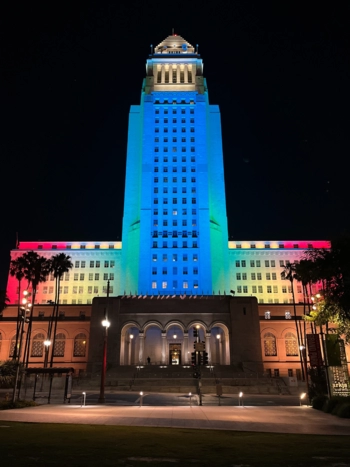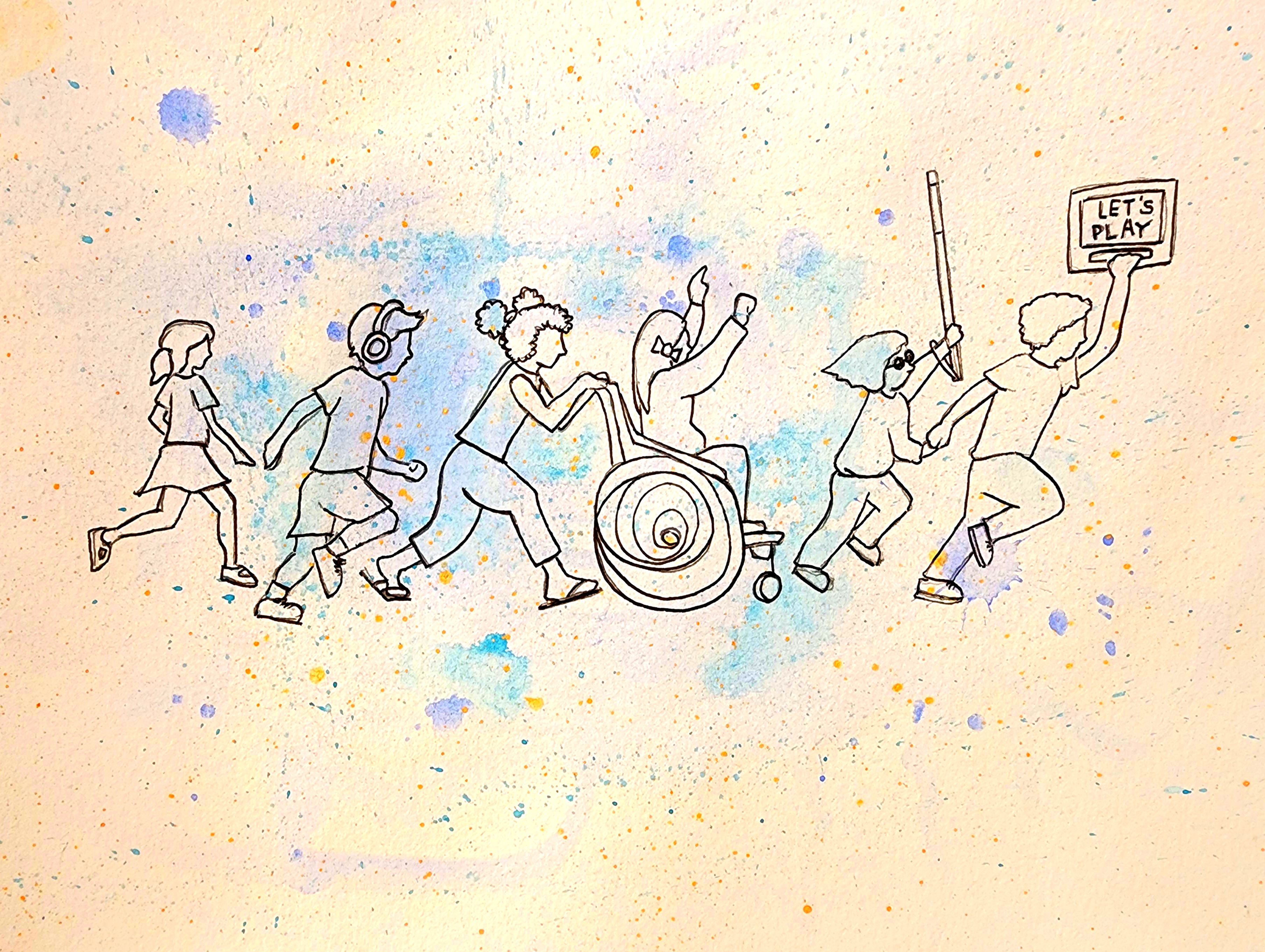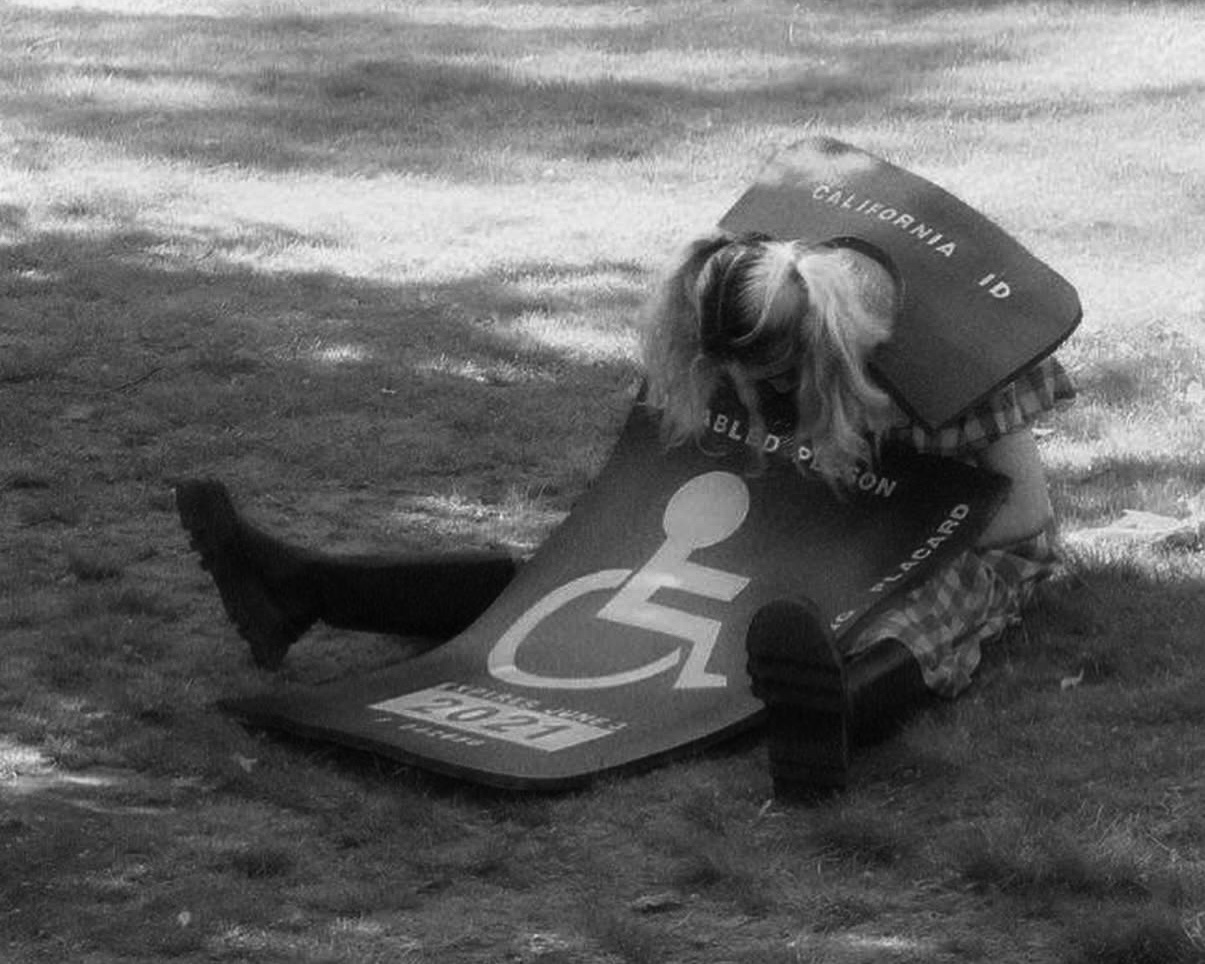
Photos courtesy of Tom Olin
Navigation Menu
Honoring the Disability Rights Movement
July 26, 2025 marks the 35th anniversary of the Americans with Disabilities Act (ADA) — the landmark civil rights law that prohibits discrimination against people with disabilities in all areas of public life, including employment, education, transportation, and access to public services and spaces.
Decades of advocacy, organizing, and direct action led by disabled people made the ADA possible. From the Capitol Crawl to local organizing here in Los Angeles, the disability rights movement continues to push society toward inclusion, justice, and equal opportunity.
This year, we recognize the advocates, artists, leaders, and everyday community members who work to advance disability rights and challenge ableism — not only during Disability Pride Month, but every day of the year.
As part of this ongoing work, the City of Los Angeles reaffirmed its commitment to disability equity and access ahead of the 2028 Olympic and Paralympic Games. On July 26, 2025, Mayor Karen Bass joined City leaders, LA28 representatives, and Paralympic athletes to announce the City’s Host City Accessibility Commitment. This includes a plan to ensure the Games and their legacy are inclusive of people with disabilities, the appointment of the City’s first Accessibility Chief for Major Events, and ongoing collaboration with the Department on Disability to shape an accessible future for all Angelenos.


To celebrate Disability Pride Month and the 35th anniversary of the ADA, Los Angeles City Hall will be lit in the colors of the Disability Pride Flag on Saturday, July 26, 2025.
Each color reflects a different part of the disability experience:
- Red represents physical disabilities
- Gold (yellow) stands for cognitive and intellectual disabilities
- White symbolizes invisible and undiagnosed disabilities
- Blue represents psychiatric disabilities
- Green stands for sensory disabilities
These colors were chosen to honor the diversity, strength, and unity of disabled people in Los Angeles and beyond. The base of the building was left unlit to represent the flag’s charcoal background—a symbol of mourning for disabled lives lost to violence, neglect, and systemic barriers.
Accessible Braille Signage for Olympic & Paralympic Flag Display at Los Angeles City Hall
As part of the City’s commitment to accessibility and inclusion, the Mayor’s Office of International Affairs requested the support of the Department on Disability to help create new Braille signage for the Olympic and Paralympic flag display at City Hall. The Department provided design guidance, developed the content layout, and worked closely with the Braille Institute to ensure accuracy and compliance with accessibility standards. The Mayor’s Office of Major Events installed the signage on the display podiums.
These podiums were created using universal design principles, with careful attention to height, reach range, and angle for readability. The signage includes:
- Braille translations of the text displayed inside each case
- Tactile logos for both the Olympic and Paralympic Games
- Braille image descriptions of the flags, photographs, and display elements
This is the first time tactile and Braille signage of this kind has been included in a City Hall display. The signs will remain in place through the LA28 Games and are open to the public on weekdays from 9:00 a.m. to 5:00 p.m. at Los Angeles City Hall.

ADA 35 Disability Art Showcase
In celebration of the 35th Anniversary of the Americans with Disabilities Act, the City of Los Angeles Department on Disability is proud to present a juried showcase featuring artwork by disabled artists. This exhibition uplifts diverse perspectives and honors the slogan “Equity through Access” through powerful visual storytelling.
Two selected art pieces—by Diana Simon and Malia Goldman—are featured in our online exhibition. In addition, their work, along with four other pieces, is on display at the Department on Disability’s office throughout the month of July.
This Disability Art Showcase is made possible through the support and guidance of the City of Los Angeles Department of Cultural Affairs.

